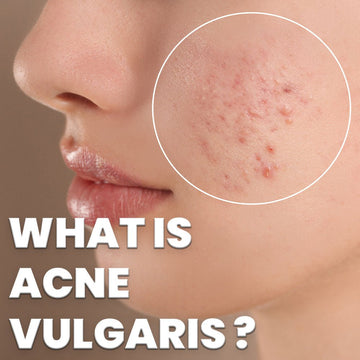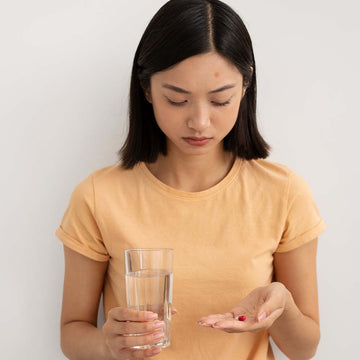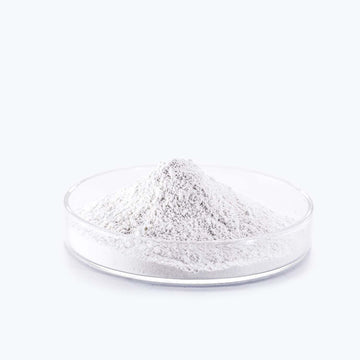Acne vulgaris is a common skin condition that involves inflammation. While it is often seen as a temporary issue during adolescence, it can persist into adulthood. Almost 90% of teenagers experience acne, and about half of them continue to have symptoms as adults. By the age of 40, around 1% of men and 5% of women still have acne lesions. Recent studies indicate a growing prevalence of acne in children, possibly due to the onset of puberty.

Definition of Acne Vulgaris
Acne vulgaris is a chronic inflammatory skin disorder that primarily affects the pilosebaceous units—the hair follicles and oil glands—of the skin. It is characterized by the formation of comedones (blackheads and whiteheads), papules (Pimple or zit), pustules, nodules, and, in severe cases, cysts. Acne usually occurs on the face, but it can also appear on the chest, back, shoulders, and other areas of the body.
What Causes Acne Vulgaris?
Understanding the underlying causes of acne vulgaris is crucial in devising effective treatment strategies. While there isn't a single factor responsible for acne, several key elements contribute to its development:
1.Hormonal Imbalances: Hormonal imbalances play a significant role in the development of acne vulgaris, particularly during puberty. Increased androgen levels, such as testosterone, stimulate the sebaceous glands, which are responsible for producing sebum (oil). The excess sebum production can lead to clogged hair follicles and the formation of acne lesions. Hormonal fluctuations can also occur during the menstrual cycle in women, leading to acne flare-ups.
2.Excess Sebum Production: Sebum, the oily substance produced by the sebaceous glands, plays a crucial role in maintaining skin health. However, excessive sebum production can contribute to acne development. The overproduction of sebum can lead to clogged hair follicles, trapping bacteria and dead skin cells within, resulting in acne formation.
3.Bacterial Overgrowth: The bacterium Propionibacterium acnes (P. acnes) is a common inhabitant of the skin. However, in acne-prone individuals, the presence of P. acnes can contribute to the development of acne vulgaris. When hair follicles become clogged, providing an ideal environment for bacteria to thrive, P. acnes proliferates, triggering an immune response and inflammation. This inflammatory response leads to the formation of acne lesions.
4.Follicular Hyperkeratinisation: Follicular hyperkeratinisation refers to the abnormal shedding of skin cells within the hair follicles. In individuals prone to acne, the skin cells lining the follicles may not shed properly. Instead, they accumulate and mix with sebum, forming a plug that obstructs the follicle. This plug, also known as a microcomedone, serves as a breeding ground for bacteria and contributes to the development of acne.
5.Inflammation: Inflammation is a key factor in the progression of acne vulgaris. When hair follicles become clogged and bacteria proliferate, the body's immune system responds by releasing inflammatory mediators. These mediators trigger an inflammatory cascade, leading to redness, swelling, and the formation of acne lesions. Inflammation also plays a role in the destruction of collagen, potentially leading to acne scars.
6.Genetic Predisposition: Genetics may also contribute to an individual's susceptibility to acne vulgaris. If you have a family history of acne, you may be more prone to developing the condition. Certain genetic variations can influence factors such as sebum production, immune response, and follicular keratinization, increasing the likelihood of acne development.
7.External Factors: While the exact role of external factors in acne development is still being studied, certain factors may exacerbate existing acne or trigger flare-ups. These factors include:
a.Diet: Some studies suggest that a high glycemic index diet, dairy products, and foods rich in saturated fats may contribute to acne development in some individuals. However, the impact of diet on acne is still a topic of ongoing research.
b.Environmental Factors: Exposure to pollutants, irritants, and high humidity levels may aggravate acne symptoms.
c.Stress: Although stress does not directly cause acne, it can potentially worsen existing acne due to hormonal fluctuations and increased sebum production.
d.Cosmetic Products: Certain cosmetic products, particularly those that are comedogenic or oil-based, can clog pores and contribute to acne.
Pathophysiology of Acne Vulgaris
Acne vulgaris is a complex skin condition that involves various biological processes within the skin. Understanding the pathophysiology of acne can shed light on the underlying mechanisms and help develop effective treatment strategies. In this section, we will explore the key pathophysiological factors contributing to the development of acne vulgaris.
1.Sebaceous Gland Hyperactivity and Sebum Production: One of the primary factors in acne vulgaris is the hyperactivity of sebaceous glands. These glands are responsible for producing sebum, an oily substance that helps lubricate the skin. In individuals with acne, sebaceous glands become overactive due to hormonal imbalances, particularly an increase in androgens. This excess sebum production contributes to the development of acne lesions.
2.Follicular Hyperkeratinisation and Comedone Formation: Follicular hyperkeratinization plays a crucial role in the pathogenesis of acne vulgaris. It refers to the abnormal shedding of skin cells within the hair follicles, leading to the formation of plugs or comedones. When the excess sebum mixes with these keratinized cells, it forms a sticky mixture that obstructs the follicular opening, resulting in the formation of two types of comedones: blackheads and whiteheads.
a.Blackheads (Open Comedones): Blackheads occur when the follicular opening remains open, allowing the trapped material to oxidize and appear dark in color.
b.Whiteheads (Closed Comedones): Whiteheads form when the follicular opening is completely blocked, preventing the trapped material from oxidizing. They appear as small, flesh-colored or white bumps on the skin.
c.Propionibacterium acnes (P. acnes) Bacterial Infection: Propionibacterium acnes, a type of bacteria commonly found on the skin, plays a significant role in acne vulgaris. In individuals prone to acne, these bacteria multiply and colonize the hair follicles, triggering an inflammatory response. P. acnes produces enzymes that break down sebum into fatty acids, which further contribute to inflammation and the formation of acne lesions.
3.Inflammation and Immune Response: The presence of P. acnes and the accumulation of sebum and keratinocytes within the follicles trigger an immune response in the skin. The immune system recognizes these factors as foreign invaders and releases inflammatory mediators, such as cytokines and chemokines. This inflammatory response leads to redness, swelling, and the formation of various types of acne lesions, including papules, pustules, nodules, and cysts.
4.Hormonal Influence on Acne Vulgaris: Hormonal imbalances, particularly an increase in androgens, play a significant role in acne development. Androgens stimulate the sebaceous glands to produce more sebum, contributing to sebaceous gland hyperactivity. Hormonal fluctuations during puberty, menstrual cycles, and certain medical conditions can exacerbate acne symptoms. Hormonal therapies, such as oral contraceptives or anti-androgen medications, are sometimes used to manage acne in individuals with hormonal imbalances.
5.Genetic Predisposition: While not fully understood, genetics are thought to influence an individual's susceptibility to acne vulgaris. Studies have shown that acne tends to run in families, suggesting a genetic component. Certain genetic variations may affect sebum production, follicular structure, and the inflammatory response, making some individuals more prone to developing acne.
Types of Acne Vulgaris
Acne vulgaris is a complex skin condition that manifests in various forms. Understanding the different types of acne is essential for accurate diagnosis and effective treatment. Let's dive in!
1.Comedonal Acne:Comedonal acne is characterized by the presence of comedones—non-inflammatory acne lesions that form when hair follicles become clogged with oil and dead skin cells. There are two types of comedones:
a.Blackheads (Open Comedones): Blackheads appear as small, dark bumps on the skin's surface. The dark color is not due to dirt but rather the oxidation of sebum and melanin within the comedo.
b.Whiteheads (Closed Comedones): Whiteheads are small, flesh-colored bumps that are covered by a thin layer of skin. They are closed, meaning the follicle opening is obstructed, preventing oxidation.
Comedonal acne is often considered a mild form of acne and can typically be managed with proper skincare and topical treatments.
2.Inflammatory Acne:Inflammatory acne is characterized by the presence of red, inflamed lesions. These lesions occur due to an immune response triggered by the presence of bacteria and inflammation within the hair follicles. The two primary types of inflammatory acne are:
a.Papules: Papules are small, raised, red bumps that can be sensitive to touch. They occur when the walls of hair follicles break down, causing inflammation.
b.Pustules: Pustules are similar to papules but contain pus at their centers. They appear as red bumps with a yellow or white head.
3.Nodules: Nodules are large, solid, painful bumps that develop deep within the skin. They can be felt beneath the skin's surface and may persist for weeks or months.
4.Cysts: Cysts are similar to nodules but contain fluid or semi-fluid material. They are typically larger than nodules and can be extremely painful. Cysts have the potential to cause long-lasting scars.
What are the signs and symptoms of acne vulgaris?
The signs and symptoms of acne vulgaris can vary in severity and presentation, but the following are the common manifestations:
1.Comedones: These are non-inflammatory lesions that appear as blackheads (open comedones) or whiteheads (closed comedones) and result from clogged hair follicles.
2.Inflammatory Lesions: Inflammatory acne lesions include papules, which are small, red, raised bumps, and pustules, which are papules filled with pus. These lesions are often tender and may cause discomfort.
3.Nodules and Cysts: In more severe cases, acne vulgaris can lead to the formation of nodules and cysts. Nodules are large, solid, painful bumps deep within the skin, while cysts are filled with fluid or semi-fluid material. These lesions can cause significant scarring if not properly managed.
4.Redness and Swelling: Inflamed acne lesions are characterized by redness and swelling in the affected areas of the skin.
5.Oily Skin: Excessive sebum production can result in oily skin, giving it a shiny appearance.
6.Scarring: In some cases, acne vulgaris can lead to permanent scarring, which may be in the form of pitted or raised areas on the skin.
It's important to note that the severity and extent of these symptoms can vary from person to person. Consulting with a dermatologist is recommended for accurate diagnosis and appropriate treatment based on individual circumstances.
Management of Acne Vulgaris
The management of acne vulgaris aims to reduce existing acne lesions, prevent new ones from forming, and minimize the risk of scarring. Treatment plans are often tailored to the individual's specific needs and may involve a combination of the following approaches:
1.Topical Medications:Topical treatments are commonly used as a first-line approach for mild to moderate acne. These medications are applied directly to the skin and may include:
2.Retinoids: Derived from vitamin A, retinoids help unclog pores, reduce inflammation, and promote skin cell turnover.
3.Benzoyl Peroxide: This ingredient kills bacteria, reduces inflammation, and helps remove excess oil from the skin.
4.Topical Antibiotics: Antibiotics can help control bacterial growth and inflammation when applied to the affected areas.
5.Salicylic Acid: It is a beta hydroxy acid (BHA) that penetrates the pores, exfoliating dead skin cells, and reducing inflammation. It's particularly effective for treating blackheads and whiteheads. By promoting skin turnover, it helps prevent new blemishes.
6.Azelaic Acid: Azelaic acid has antibacterial and anti-inflammatory properties and can help normalize skin cell turnover.
Oral Medications:
Oral medications are typically prescribed for moderate to severe acne or when topical treatments are insufficient. Common oral medications include:
1.Antibiotics: Oral antibiotics such as tetracycline, doxycycline, or minocycline are used to target bacteria and reduce inflammation.
2.Hormonal Therapy: For females with hormonal acne, oral contraceptives (birth control pills) or anti-androgen medications may be recommended to regulate hormone levels.
3.Isotretinoin: Isotretinoin, often known as Accutane, is a potent oral medication used for severe acne that doesn't respond to other treatments. It significantly reduces sebum production, prevents clogging of hair follicles, and has long-lasting effects.
4.Professional Procedures:
In certain cases, dermatologists may perform specific procedures to treat acne and minimize scarring. These procedures include:
5.Chemical Peels: Chemical solutions are applied to the skin to exfoliate the outer layer, unclog pores, and improve overall skin texture.
6.Microdermabrasion: This procedure involves using a device to gently exfoliate the skin and remove dead cells, helping to unclog pores and reduce acne.
7.Laser or Light Therapies: These therapies use specific wavelengths of light to target bacteria and reduce inflammation in the skin.
8.Corticosteroid Injections: Injections of corticosteroids can quickly reduce inflammation and the size of large, painful acne lesions.
Skincare Practices:
Establishing a consistent skincare routine is crucial for managing acne. It may involve gentle cleansing of the skin twice daily, using non-comedogenic and oil-free products, avoiding harsh scrubbing, and keeping the skin hydrated with non-comedogenic moisturizers.
Lifestyle Modifications:
Making certain lifestyle changes can support acne management. This includes:
Diet: Although the impact of diet on acne is still under study, a healthy and balanced diet is advised.





